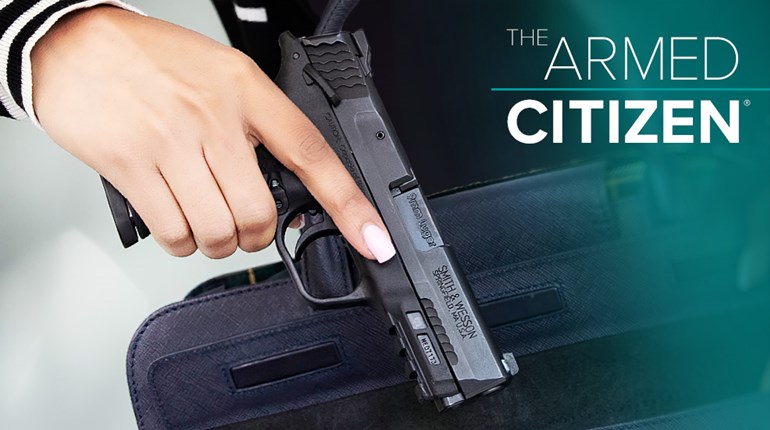
There are many options for concealed carry in everyday "street" clothes, but the work environment limits the options for concealed carry in the office. Carrying a firearm discreetly is always a tradeoff between firepower and concealability, and the office environment places a higher priority on concealment than other considerations. This makes it a challenge to find ways to carry a firearm safely and comfortably in today's "business casual" workplace.

The recent popularity of .380 ACP semi-automatic "pocket" pistols has made concealed carry in the office much easier. Manufacturers such as Ruger, Smith & Wesson and many others have introduced (or reintroduced) small, thin, lightweight pistols that conceal easily yet are reliable and powerful enough to carry with confidence. If revolvers are more to your liking, there are also new offerings in .38 Spl. and .357 Mag., such as the Ruger LCR and Smith & Wesson Bodyguard.
It's important to consider the legal ramifications of concealed carry in your workplace. State laws regarding firearm carry on private property such a business or office building vary widely, and it is imperative to thoroughly study your state's laws and applicable federal law before deciding to carry at work. Also consider the legal and ethical consequences of carrying a concealed firearm at work, such as the human-resources policies of your employer or landlord, and what might occur if those rules are not followed.
Active-shooter incidences are extremely rare, so that scenario should not be your primary concern. Rather, consider more common (but still potentially deadly) crimes like the armed mugger in the parking lot or an angry customer who chooses to commit life-threatening violence.
I've carried in office environments for more than six years, and before I did so, I sought out the opinion of qualified instructors like NRA Senior Training Counselor Jim Neff of Generations Firearm Training. His advice was to keep in mind the different materials our clothes are made of and how they will substantially change your ability to access a concealed firearm. Shirt length, size and shape of pockets, location of belt loops and looseness of pant legs are different between almost all brands. The best way to demonstrate this is with your standard slacks versus your favorite jeans. Try the same methods in both, and you will usually see a substantial difference.

Neff did not forget about women who carry in the office. "The same subtle changes—in skirt lengths, clothing material, shirt lengths, pant leg looseness and shape of hips and waist—can make a big difference regarding firearm accessibility," he says. "Off-body carry becomes more common with women. Accessibility and retention need to be seriously considered when using such methods."
It's important to run tests and see what options for office carry work better for you than others. In order to find out which holster works best for the task, I've selected a common handgun for such purposes: a Kel-Tec P3AT with a Crimson Trace Lightguard weaponlight. Neff and I ran through two different scenarios that mimic "real-life" workplace environments with the P3AT using five types of common concealed-carry holsters. We then averaged our scores together to establish a basis for comparing the effectiveness of each holster.
The holsters used were:
A tuckable inside-the-waistband (IWB) holster, tucked into a dress shirtA pocket holster on the strong sideAn ankle holsterA day planner designed to carry a concealed pistolA computer bag with a small pocket for a handgun
Scenario #1
From a seated position, hands on table. On the start signal, stand and engage a target 15 feet away with one round. Repeat three times for each holster. Day-planner holster on the table, computer bag on the ground next to the table.
Scenario #2
Standing, arms at sides. At start signal, engage a target 15 feet away with one round. Repeat three times for each holster. Day-planner holster in the support hand, computer bag on the support-side shoulder.
Results
| Seated | Average time to draw and fire one shot (in seconds) |
| 3.38 | |
| IWB (Tucked) | 4.77 |
| Day Planner | 3.43 |
| Computer Bag | 5.15 |
| Ankle Holster | 5.21 |
| Standing | Average time to draw and fire one shot (in seconds) |
| 2.67 | |
| IWB (Tucked) | 3.23 |
| Day Planner | 3.30 |
| Computer Bag | 3.74 |
| Ankle Holster | 4.47 |
| Hand in Pocket | 1.47 |
Based on these results, if you carry a small pistol in an office environment, consider carrying your gun in a strong-side pocket holster. However, be sure you can access it from a seated position, and spend time on the range practicing your presentation while sitting down. In addition, this test clearly showed having a hand on the pistol in advance of something bad happening saves valuable time. Even in the office, you must be aware of danger and take steps to react appropriately.




































